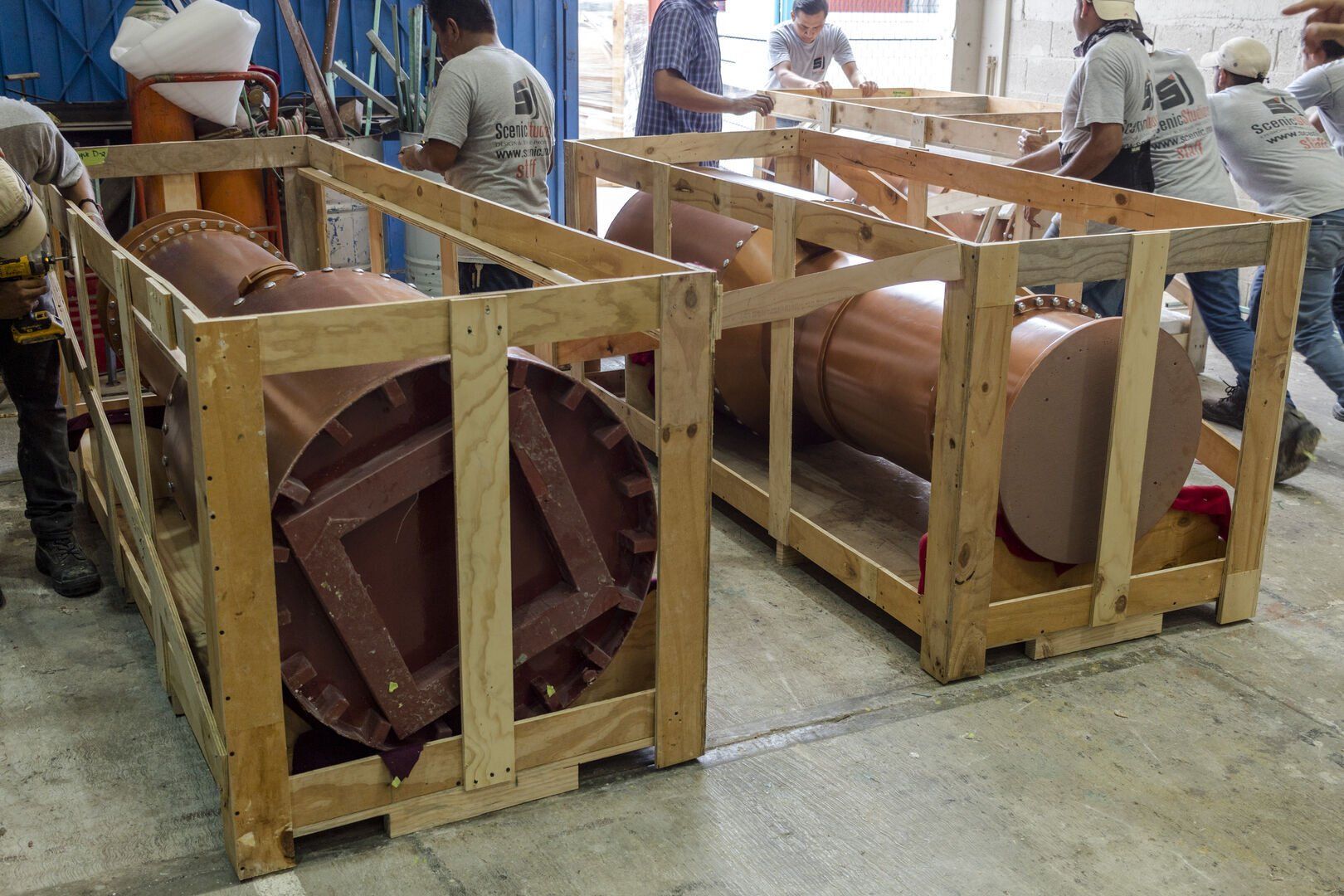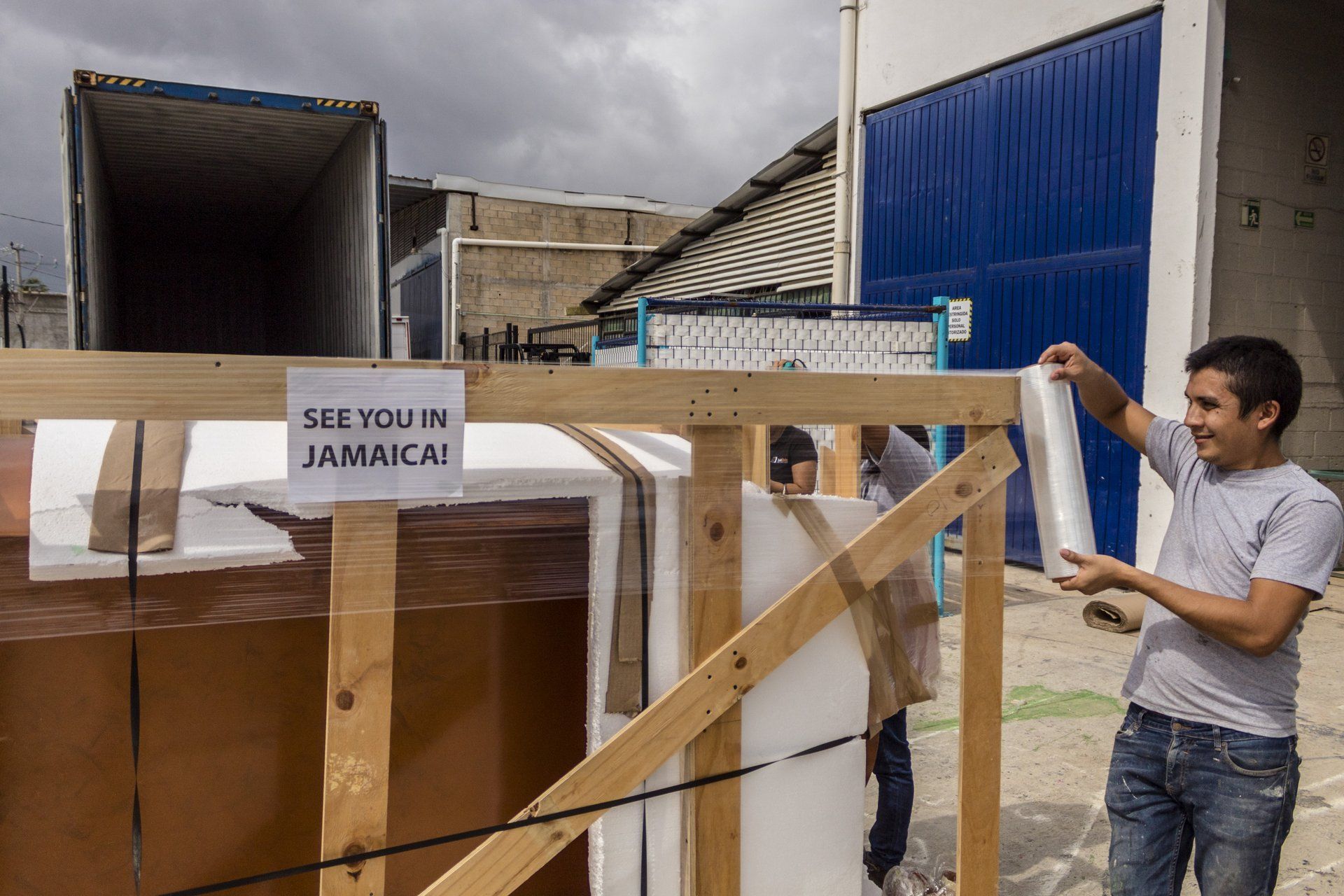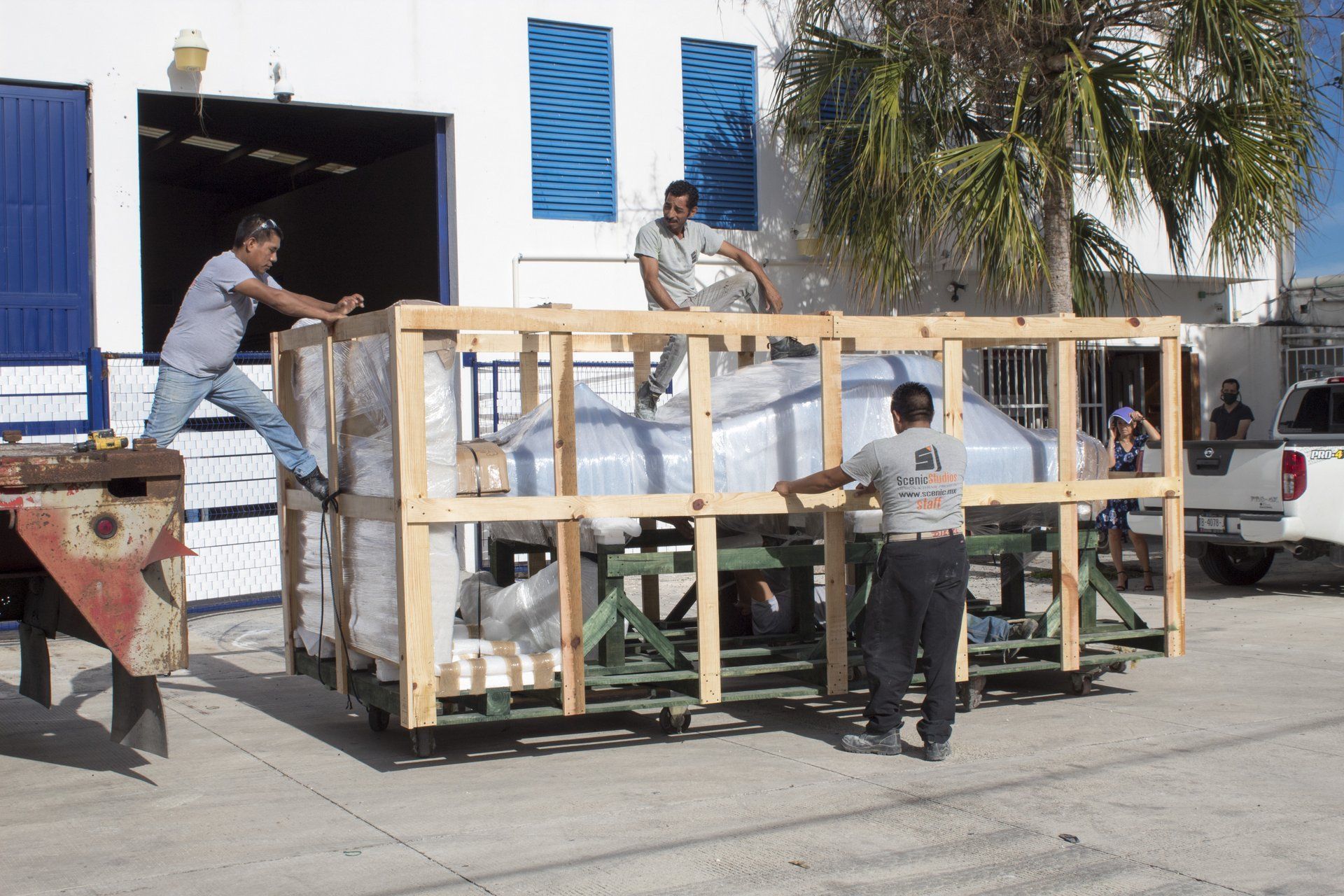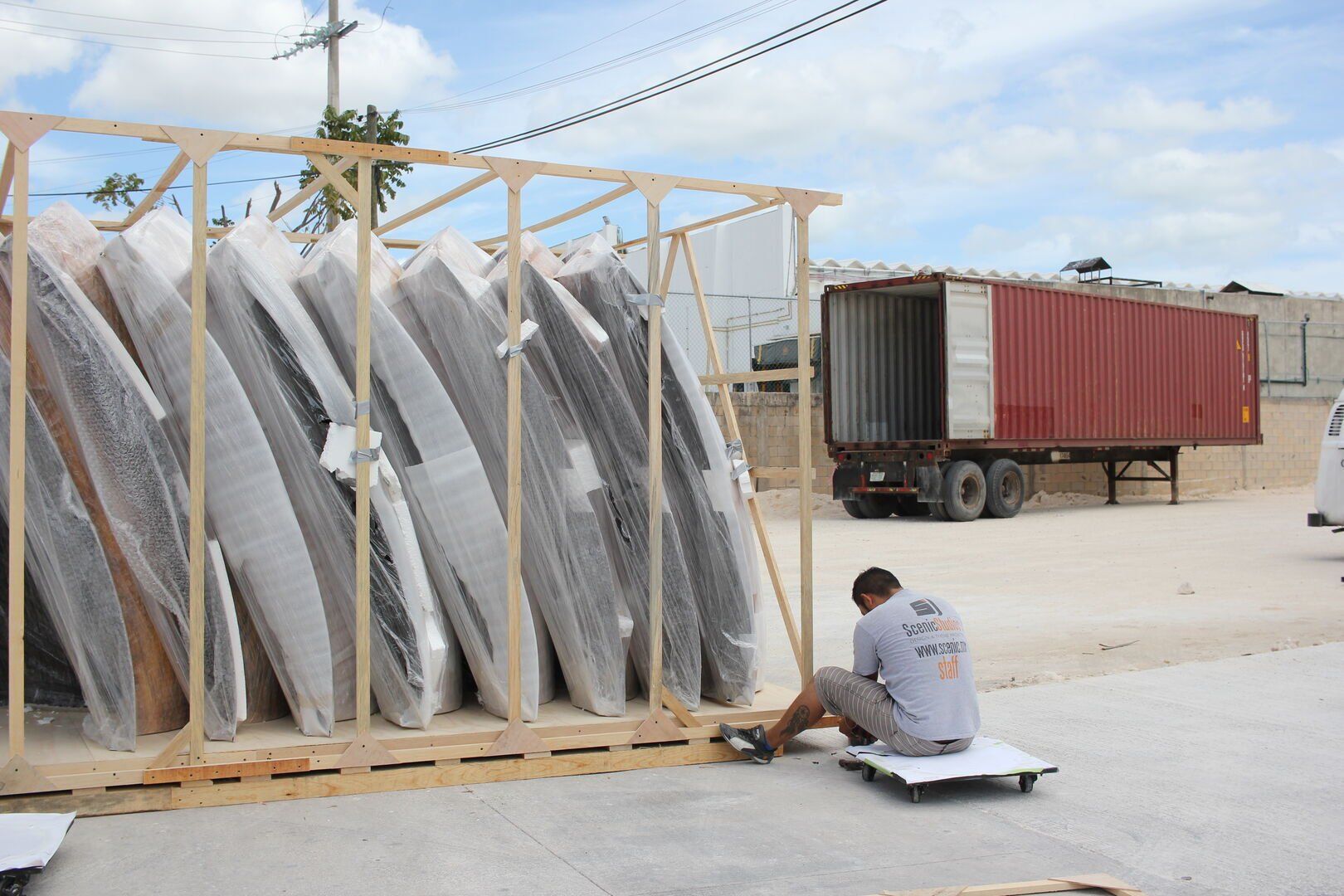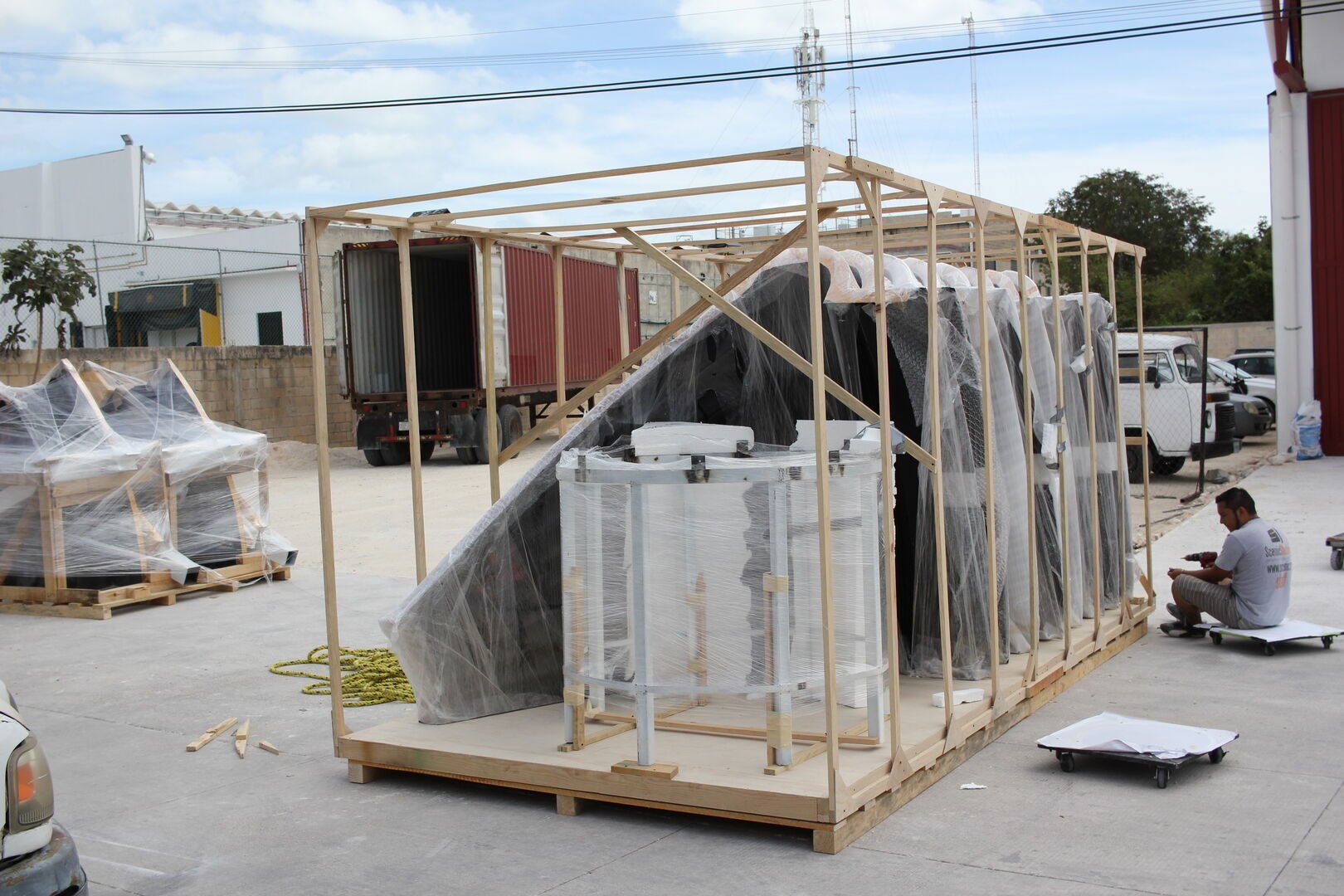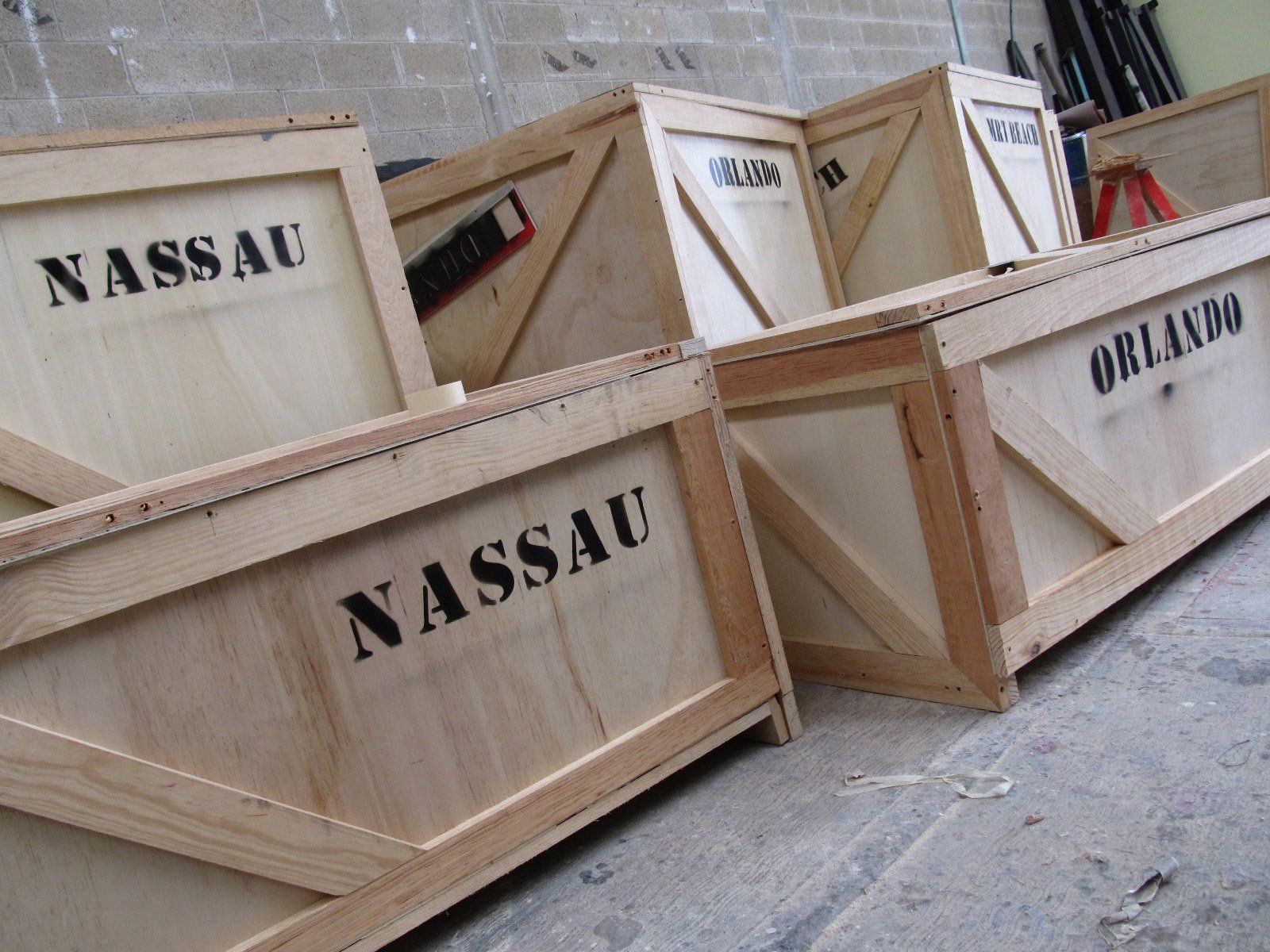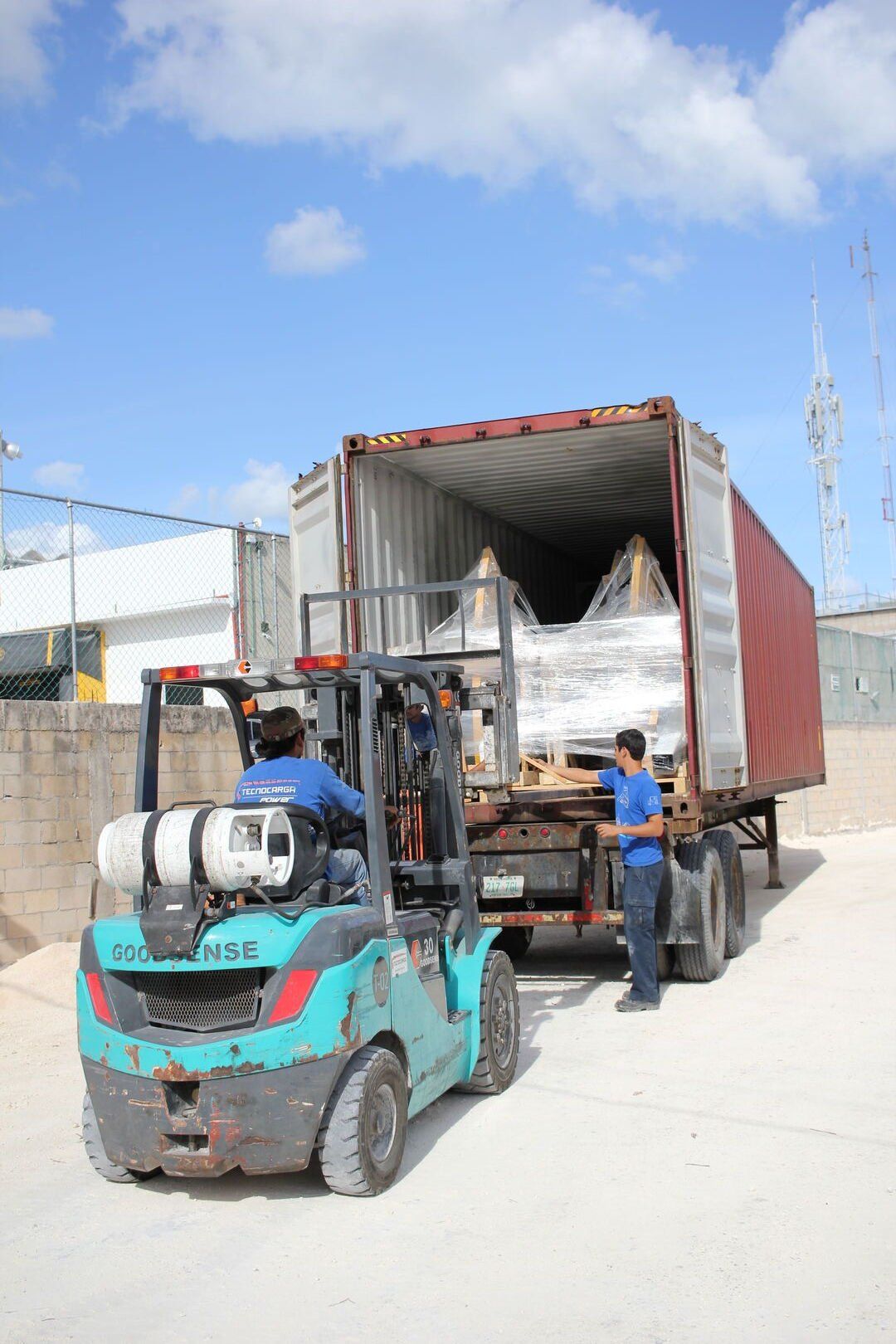Scenic Studios Part 1. Export Process and Packaging
Exportation
At the beginning, we were limited to what we could only do in our home country. Our trajectory in the design and production of custom-made pieces began in the early 2000s by covering and attending scenography projects, theming as well as decorations for any kind of event. This limitation has come to an end in recent years due to exports. An exportation is any kind of service or good that is sent outside its original territory.
Exports have allowed us to show what we are made of as a company, working on ideas and projects that become bigger and bigger as time goes on. We can proudly assure; those ideas can come true. That is why for Scenic studios, exporting products has been a very good decision that has helped the company’s growth. Taking advantage of our geographic location, maritime exports have expanded our reach and horizon in the business. More and more clients are delighted with what our 20 years of experience can offer. But in order to make this happen, there were some safety measures needed, as well as the elaboration of a foreign trade strategy.
One of this measures is hiring the right customs agent. It makes the process easier, improving the dispatch process, and resolving legal and logistical issues, in addition to carrying out the commercial operations without errors.
It is also necessary for the company to meet certain requirements. Below, we leave you some, although they may vary depending on the country.
- Have the Federal Registry of Taxpayers.
- Be aware of the costs and tariff restrictions.
Foreign trade documents:
- Export commercial invoice: Includes all the details of the export.
- Certificate of origin: It serves to inform about the country in which the merchandise has been manufactured.
- Conferred assignment: It is a notification to the tax agency where we indicate which are the customs agents that are authorized to make dispatches on our behalf.
- Letter from the Customs Agent about the process: This document details each action that the customs agent will carry out for the export. Includes data such as:
- Product destination
- Tax data of the exporting company
- Merchandise Values
- Weight of the merchandise
Packing list:
- Transport documents.
- Regulatory compliance documents.
- Sanitary certificates: They vary depending on the merchandise that is being exported.
- Export permits: They are necessary when the product requires specific permits.
- Export certificate: Applies to hazardous waste.
Packaging:
Packaging is also important, because without it, there would be no way that we could send the product preserving the state in which it was manufactured. Knowing their types can help you choose the correct packaging to guarantee the conservation of your product, and that is why you will find below the types of packaging that exist.
- Primary packaging: It is in direct contact with the product and it is the first impression clients will get. Most used materials for this type of packaging are: Glass, Plastic, Metal or Aluminum.
- Secondary packaging: They make the function of grouping primary packaging to move them correctly easier. Most used materials for this type of packaging are: Wood, Cardboard.
- Tertiary packaging: Contains both primary and secondary packaging, when used, a larger load is created. An example would be a container. Most used materials for this type of packaging are: Wood, Cardboard.
The packaging must also follow the regulations and laws of the countries involved in the export. In order to comply them, there must be certain packaging guarantees.
- Containment: It must have the right capacity so that the merchandise will be well distributed.
- Compatibility: The chosen packaging must guarantee the preservation of the product throughout the journey.
- Practicality: It is easy to assemble and handle by the carrier.
The types of packaging have different materials, sizes and weights supported. To choose them, you need to assess the characteristics of the packaging.
- Double channel boxes: Supports up to 88 lbs.
- Reinforced double channel boxes: Supports up to 154 lbs.
- Triple channel boxes: They are recommended for fragile products; they support up to 771 lbs.
- Flat cardboard container: They are very resistant and have a capacity of up to 992 lbs.
- Plywood pallet boxes: They support up to 1 ton and avoid the need for fumigation or heat treatment required by other wooden packaging.




